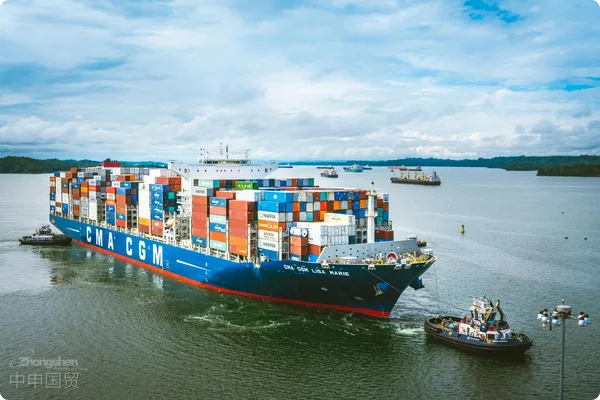- Shanghai Zhongshen International Trade Co., Ltd. - Two decades of trade agency expertise.
- Service Hotline: 139 1787 2118

Mexico Replaces China as the U.S.s Largest Trade Partner
In 2023, a profound economic shift quietly occurred—Mexico surpassed China to become the largest source of imports for the United States. This change not only holds milestone significance in trade history but also signals new trends in the global economic landscape. According to data from the U.S. Census Bureau, in the first six months of this year, U.S. imports from Mexico reached a record high of $236 billion.
Former Mexican President Porfirio Díaz once lamented: Poor Mexico, so far from God and so close to the United States. However, in todays globalized world, the meaning of this phrase has undergone a dramatic transformation. Geographically adjacent to the U.S., Mexico is gradually becoming a critical link in global supply chains.
Since February 2023, Mexico has replaced China as the U.S.s top trading partner. This shift is a direct result of the U.S.s recent supply chain diversification strategy. Particularly under the combined effects of the China-U.S. trade war and the COVID-19 pandemic, U.S. companies have begun seeking more stable and geographically convenient supply chain partners.

Mexicos Trade Structure and Geographical Advantages
Mexicos rise benefits from its close ties with the U.S. and multiple free trade agreements. Mexico has signed 14 free trade agreements with 52 countries and regions, 32 mutual investment promotion and protection agreements, and 9 economic complementarity agreements, significantly reducing trade costs for businesses operating in Mexico.
Geographically, Mexicos proximity to the U.S. provides unparalleled advantages. With the restructuring of global supply chains and the rise of nearshoring trends, Mexico has become the preferred investment destination for many U.S. and European companies. These firms establish manufacturing bases in Mexico and then ship products to the U.S., effectively reducing logistics costs and geopolitical risks.
The Complexity and Opportunities in China-US-Mexico Trade Relations
Mexicos rise not only impacts China-U.S. trade relations but also presents new opportunities for Chinese enterprises investing in and trading with Mexico. However, this change also brings complex challenges. Chinese companies considering entering the Mexican market must thoroughly analyze the trade structures, market demands, and geopolitical risks among China, the U.S., and Mexico.
Can Mexico Replace China as the Worlds Factory?
Although Mexicos rise has caused waves in international trade, viewing it as a complete replacement for China as the worlds factory requires careful consideration. First, in terms of total volume, China remains the worlds largest exporter. According to data from the Global Trade Center, despite the pandemic, Chinas total exports in 2022 grew by 6.89% year-on-year, accounting for 14.7% of global exports.
On the other hand, Mexicosforeign tradestructure differs significantly from Chinas. Mexicos exports are highly dependent on the North American market, particularly the U.S. Over the past decade, the U.S. has accounted for over 78% of Mexicos exports. In contrast, Chinas export markets are more diversified.
Third, Mexicos reliance on Chinese products cannot be ignored. In 2022, Mexicos imports from China nearly doubled, showing strong demand for Chinese manufacturing across multiple sectors.
Advantages of Chinese Enterprises in Mexico
Amid changes in global trade dynamics, Chinese enterprises in Mexico are beginning to demonstrate unique advantages. On August 15, 2023, the Mexican president signed an executive order raising tariffs on 483 products, including steel, aluminum, and chemicals. While this move impacts trade with China, South Korea, and India, it also provides opportunities for Chinese firms to relocate production lines to Mexico.
By establishing manufacturing bases in Mexico, Chinese companies can avoid high U.S. tariffs on Chinese goods and better leverage Mexicos geographical and trade advantages to expand into the North American market. According to a report from the National Autonomous University of Mexico, Chinese investment in Mexico grew by 48% in 2022, highlighting the active presence of Chinese enterprises in the Mexican market.
Risks and Opportunities in Exporting to Mexico
When considering exports to Mexico, Chinese companies must be aware of the risks. According to China Export & Credit Insurance Corporations overall risk assessment for export destinations, Mexicos SMERI index is 21.7 points, indicating a medium overall credit risk level. Therefore, Chinese firms should carefully evaluate economic and political risks and strengthen market research before entering the Mexican market.

In summary, Mexico becoming the U.S.s largest source of imports marks a profound transformation in global trade. For Chinese enterprises, this presents both challenges and new opportunities. In the context of global economic integration, adapting flexibly to changes and actively exploring new markets and cooperation models will be key to sustained development.
Related Recommendations
? 2025. All Rights Reserved. Shanghai ICP No. 2023007705-2  PSB Record: Shanghai No.31011502009912
PSB Record: Shanghai No.31011502009912










